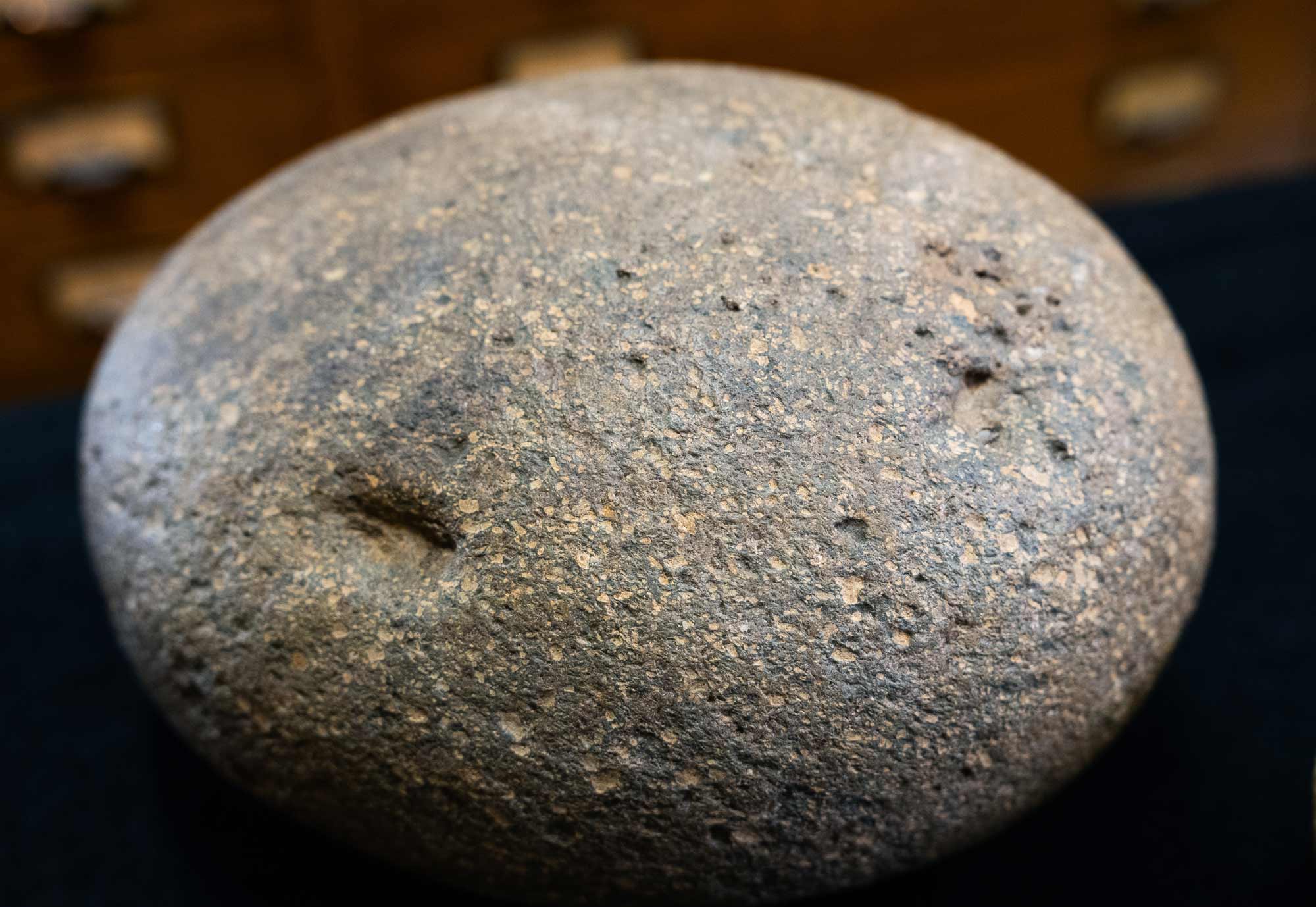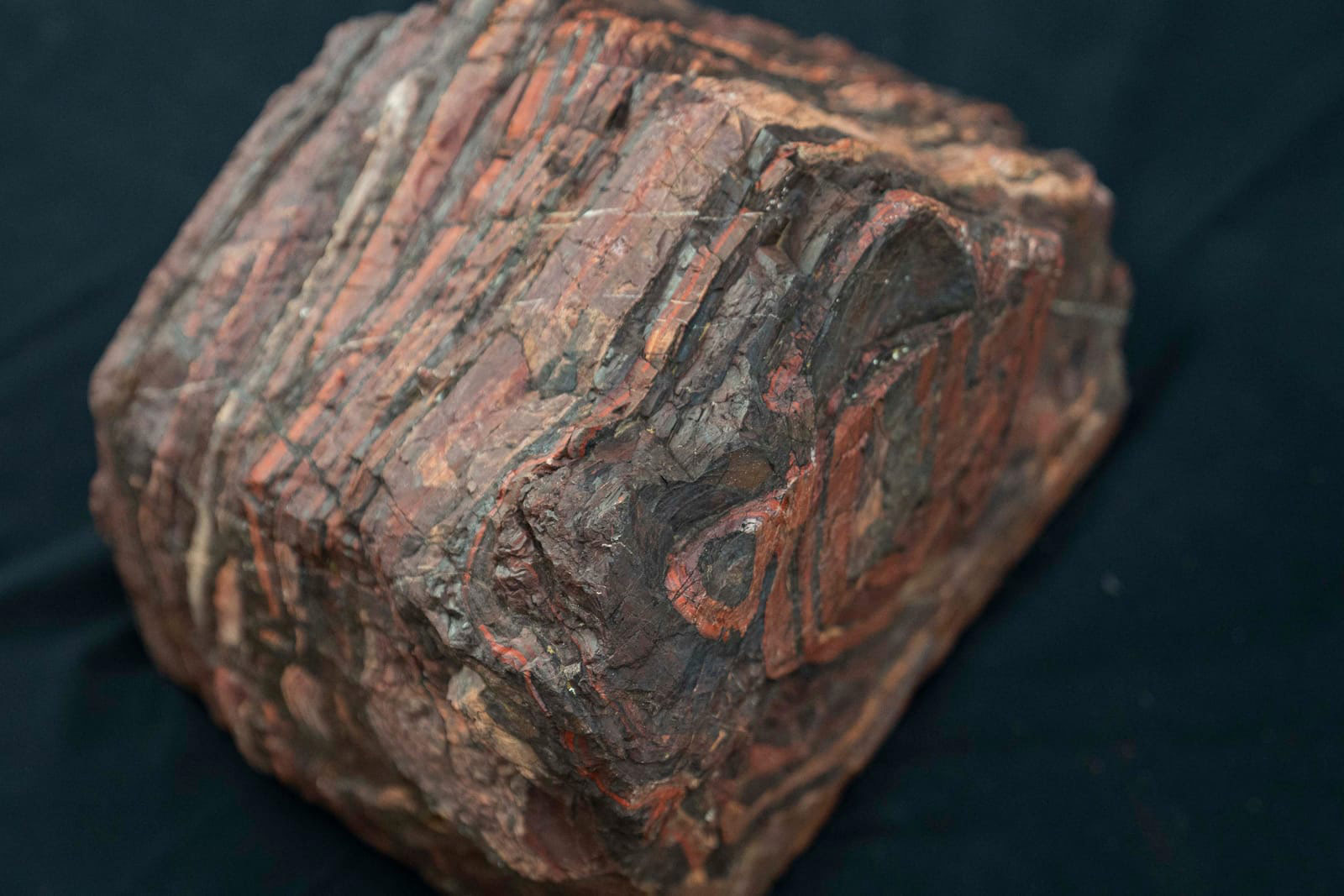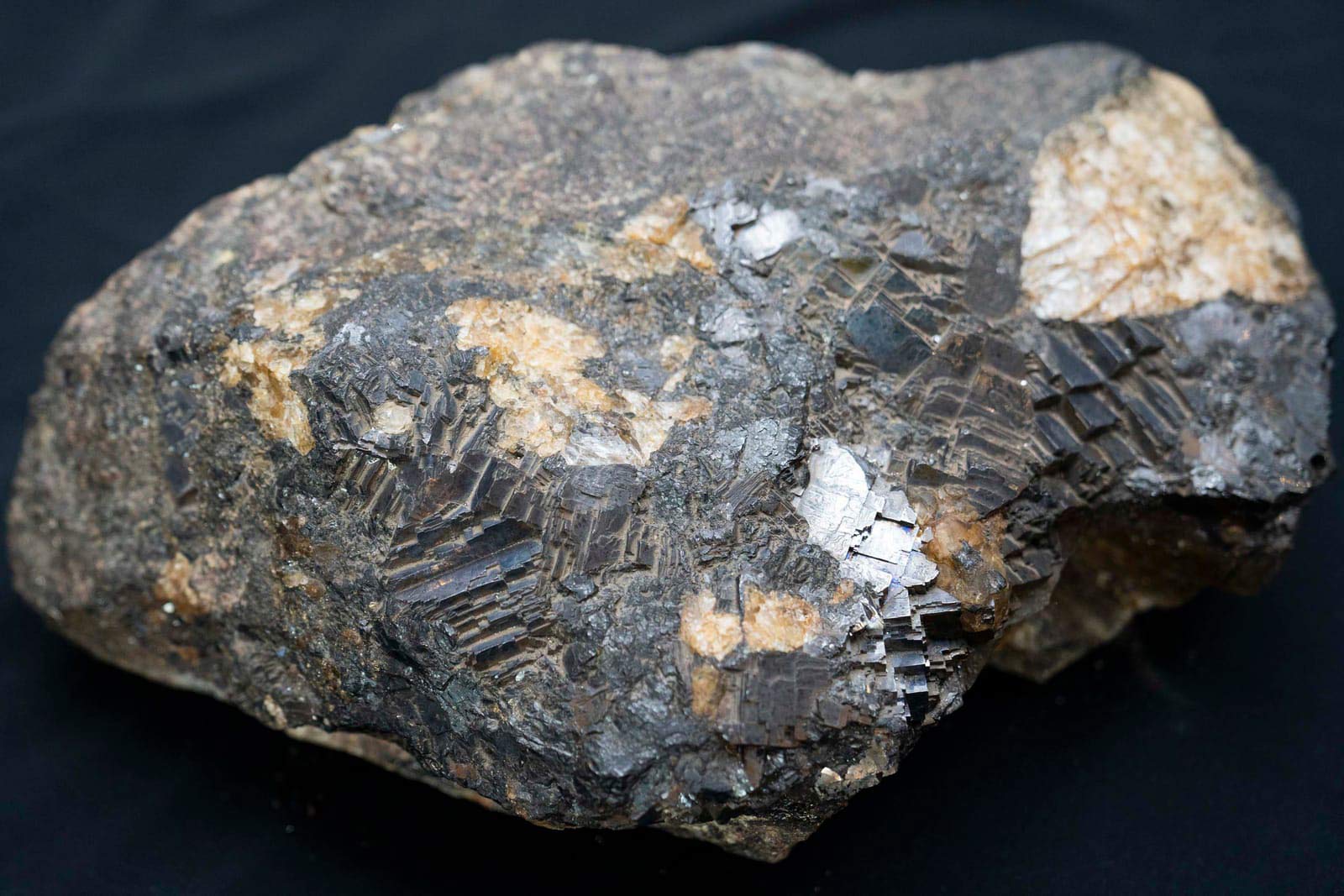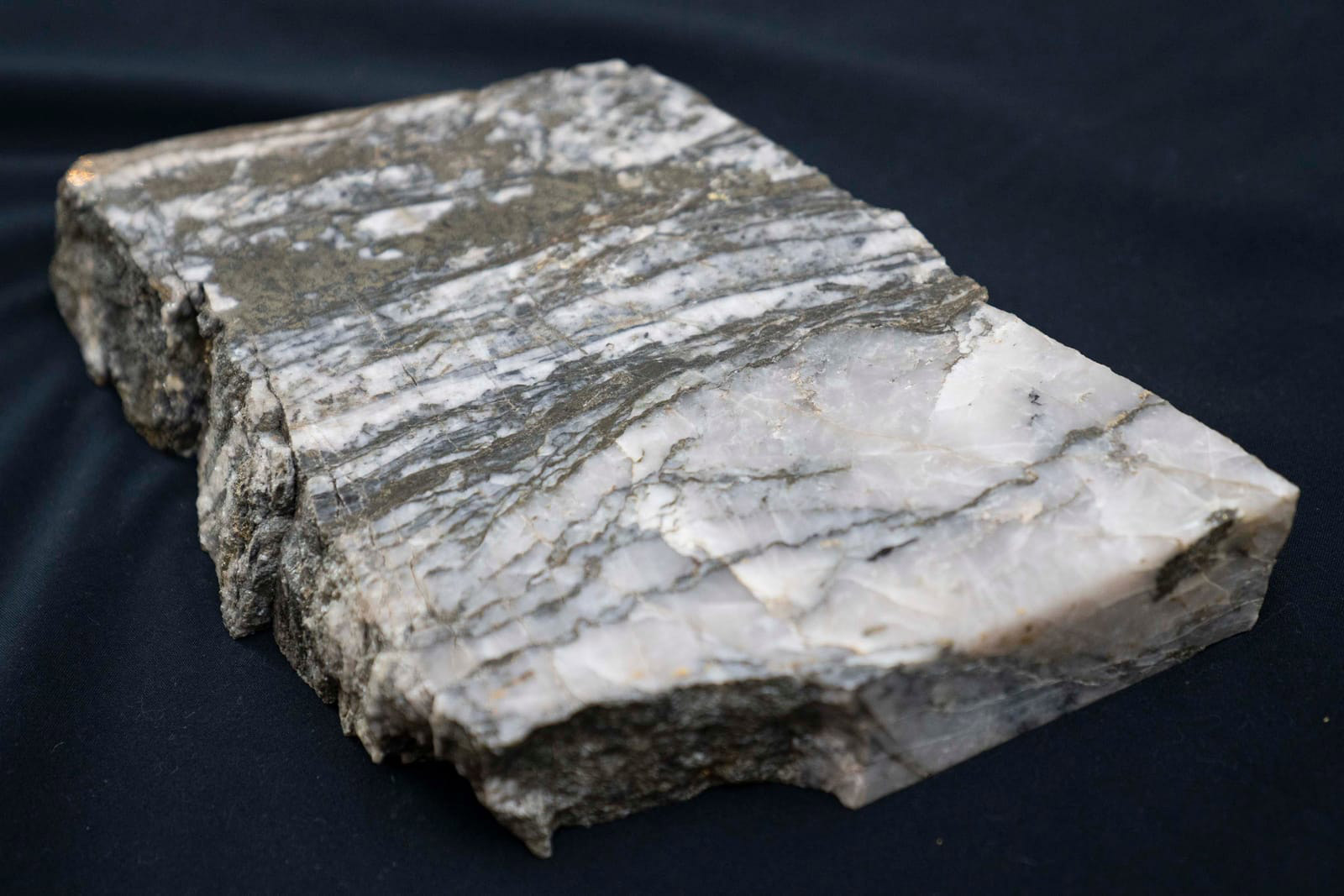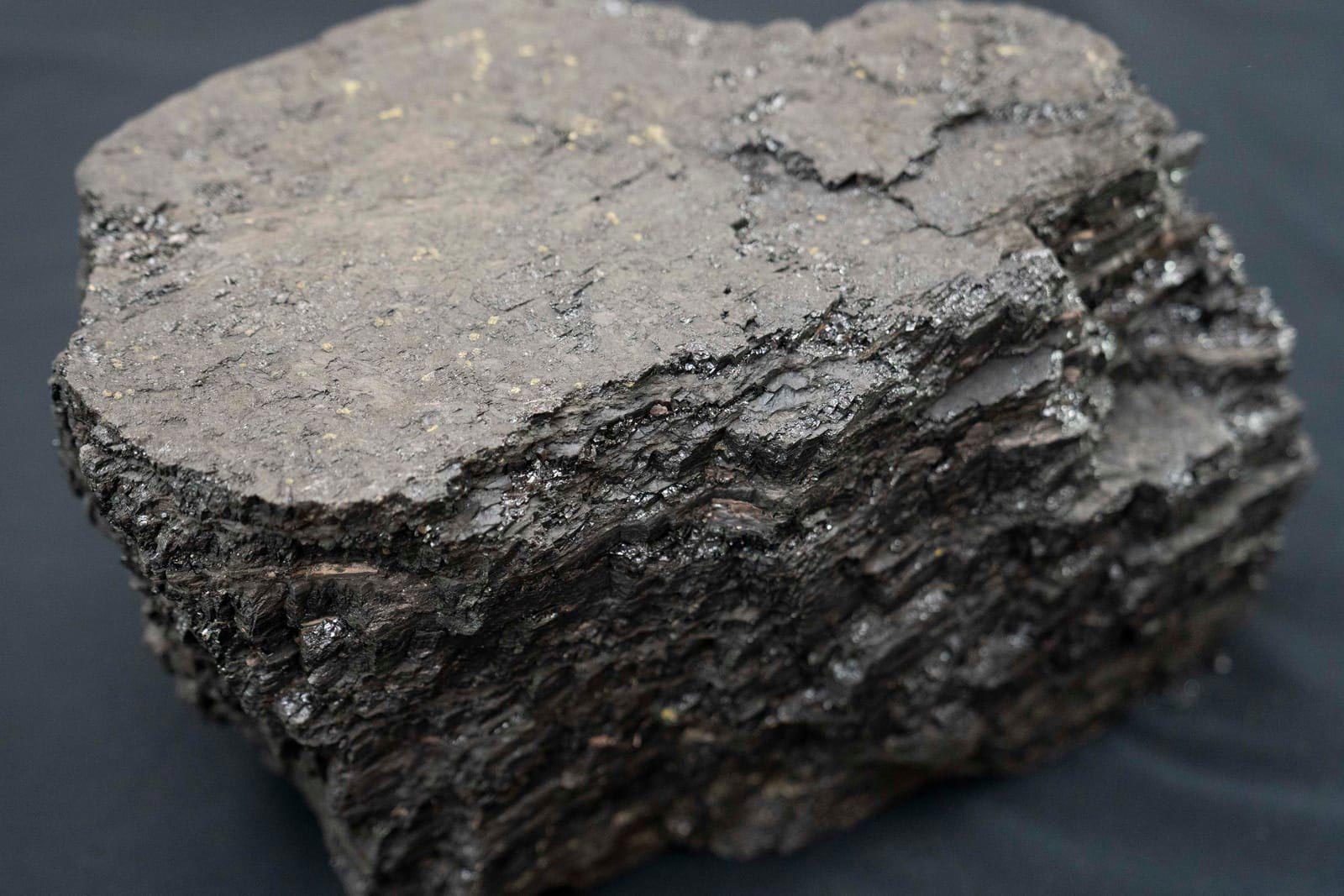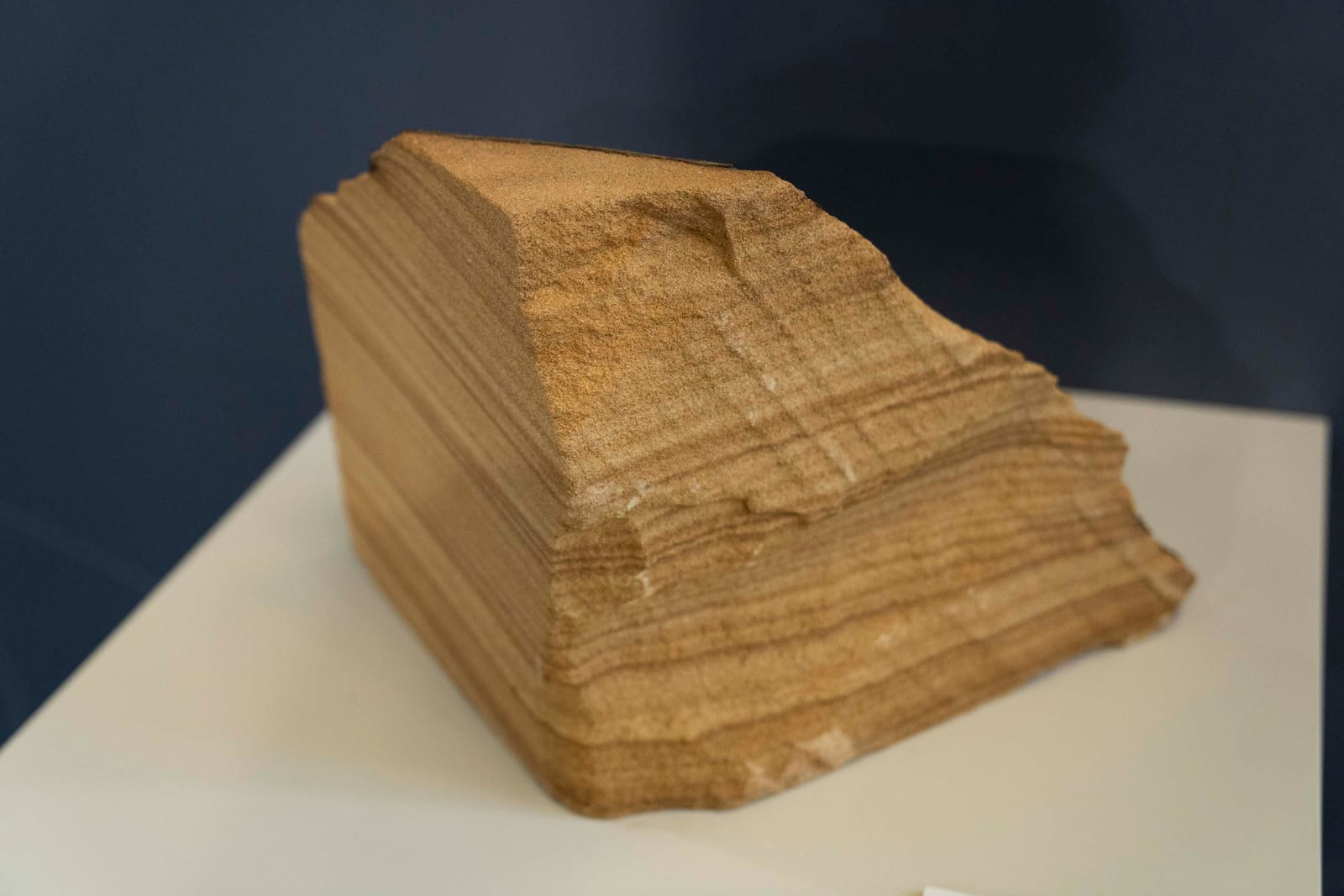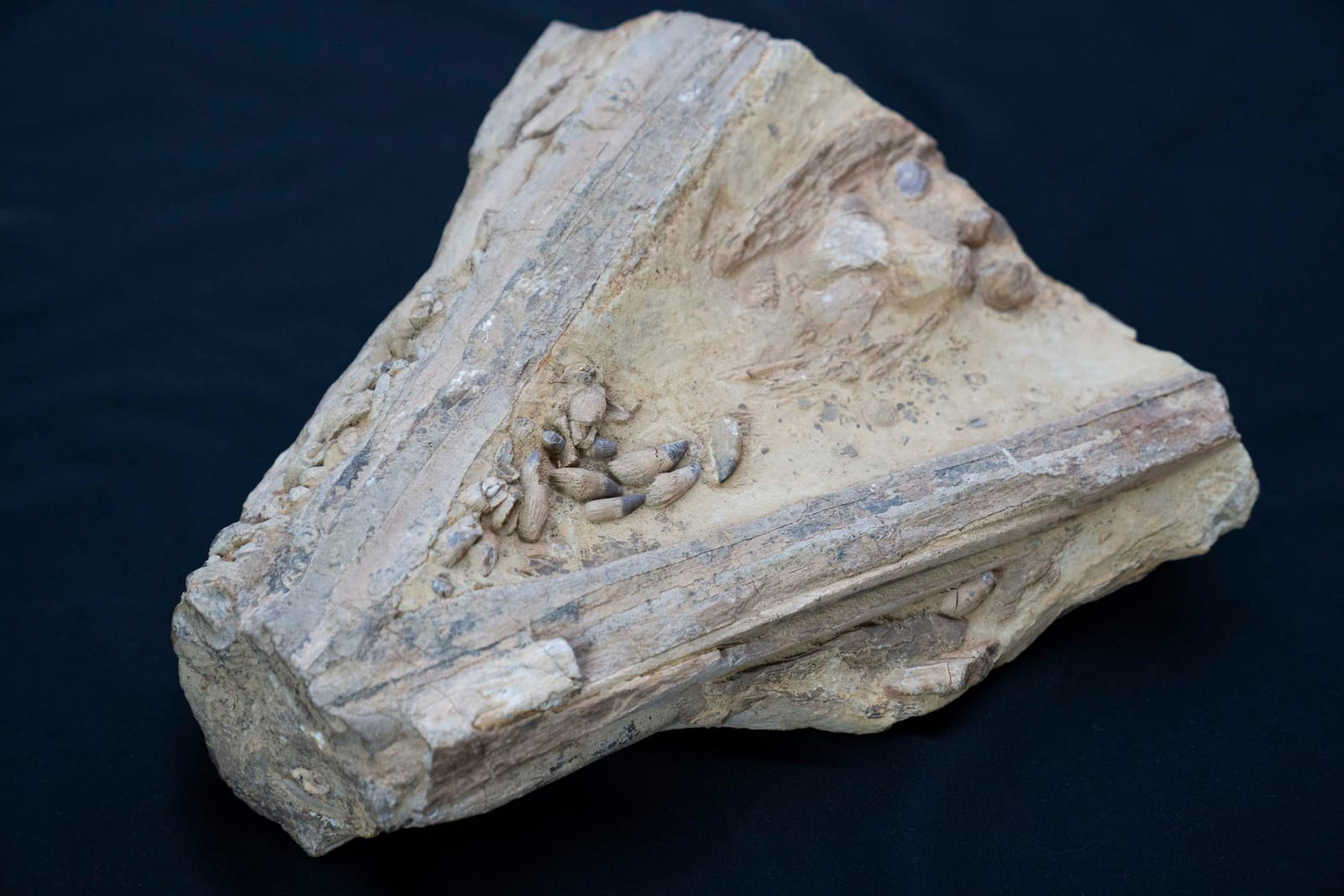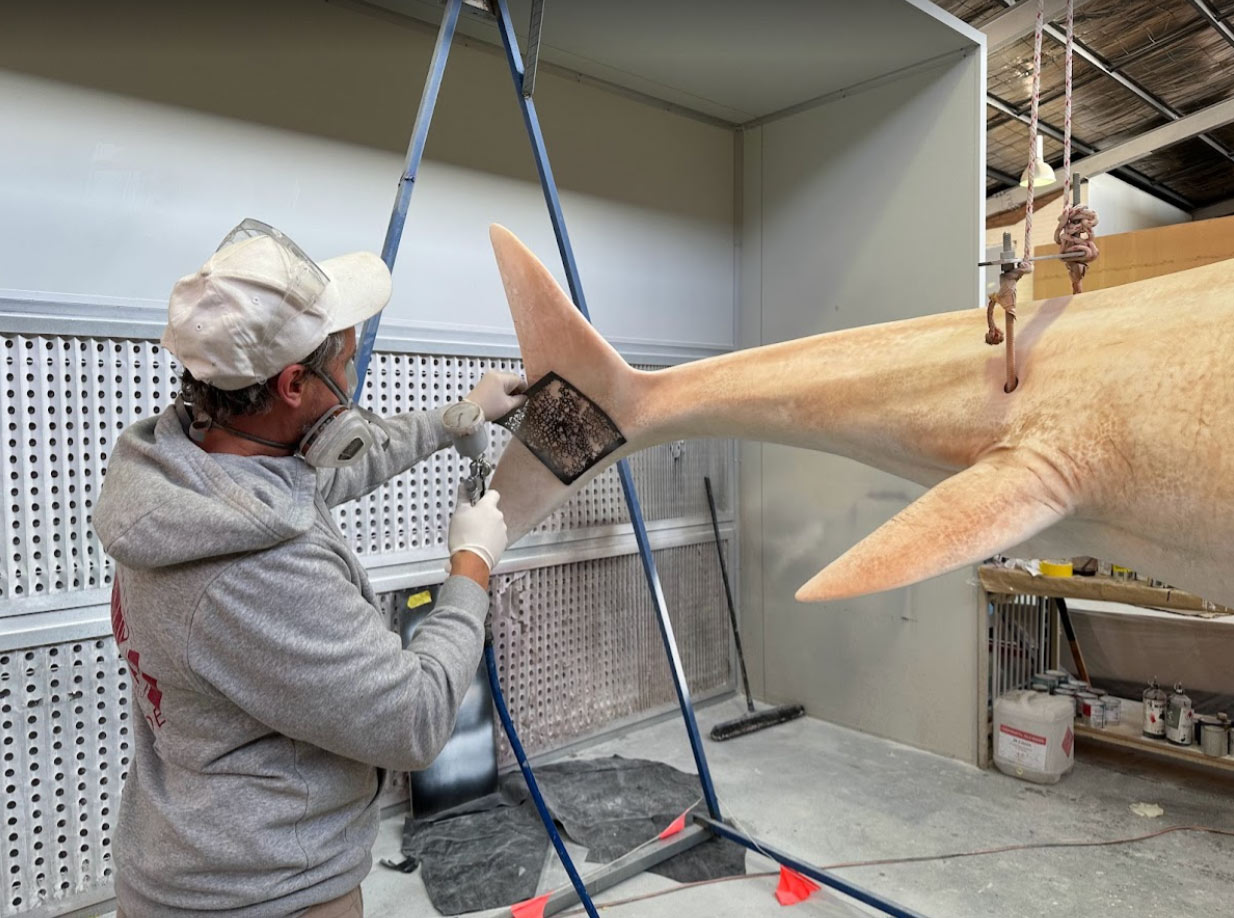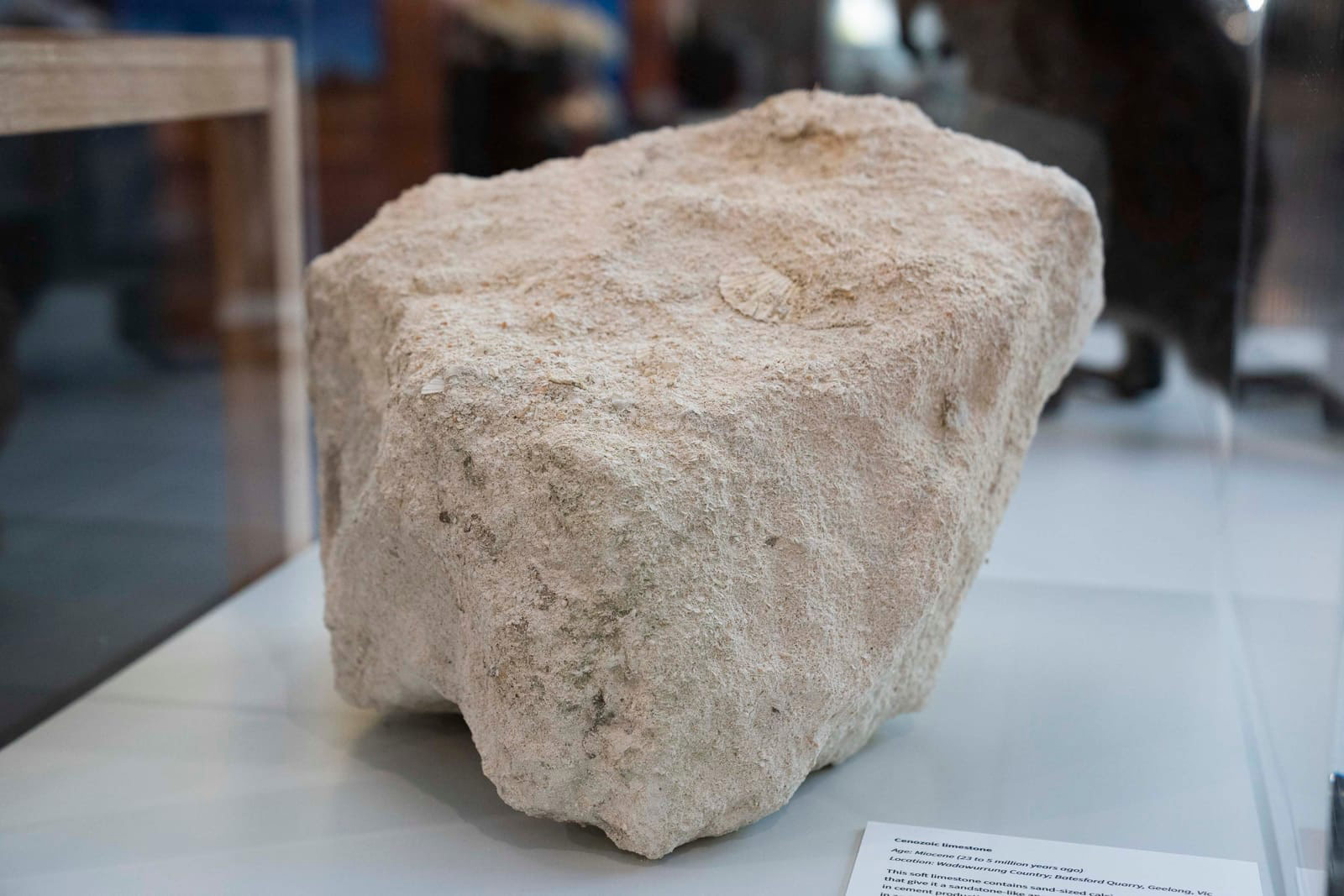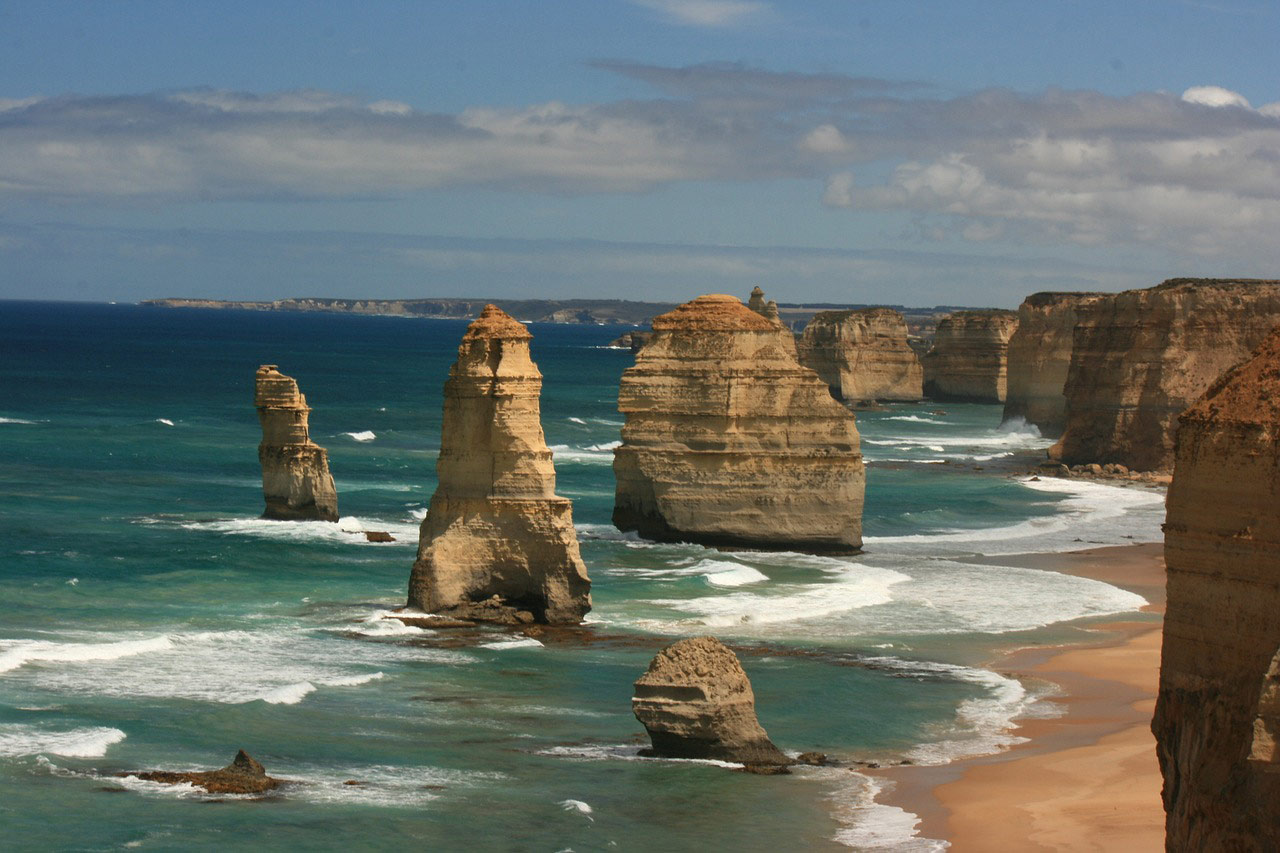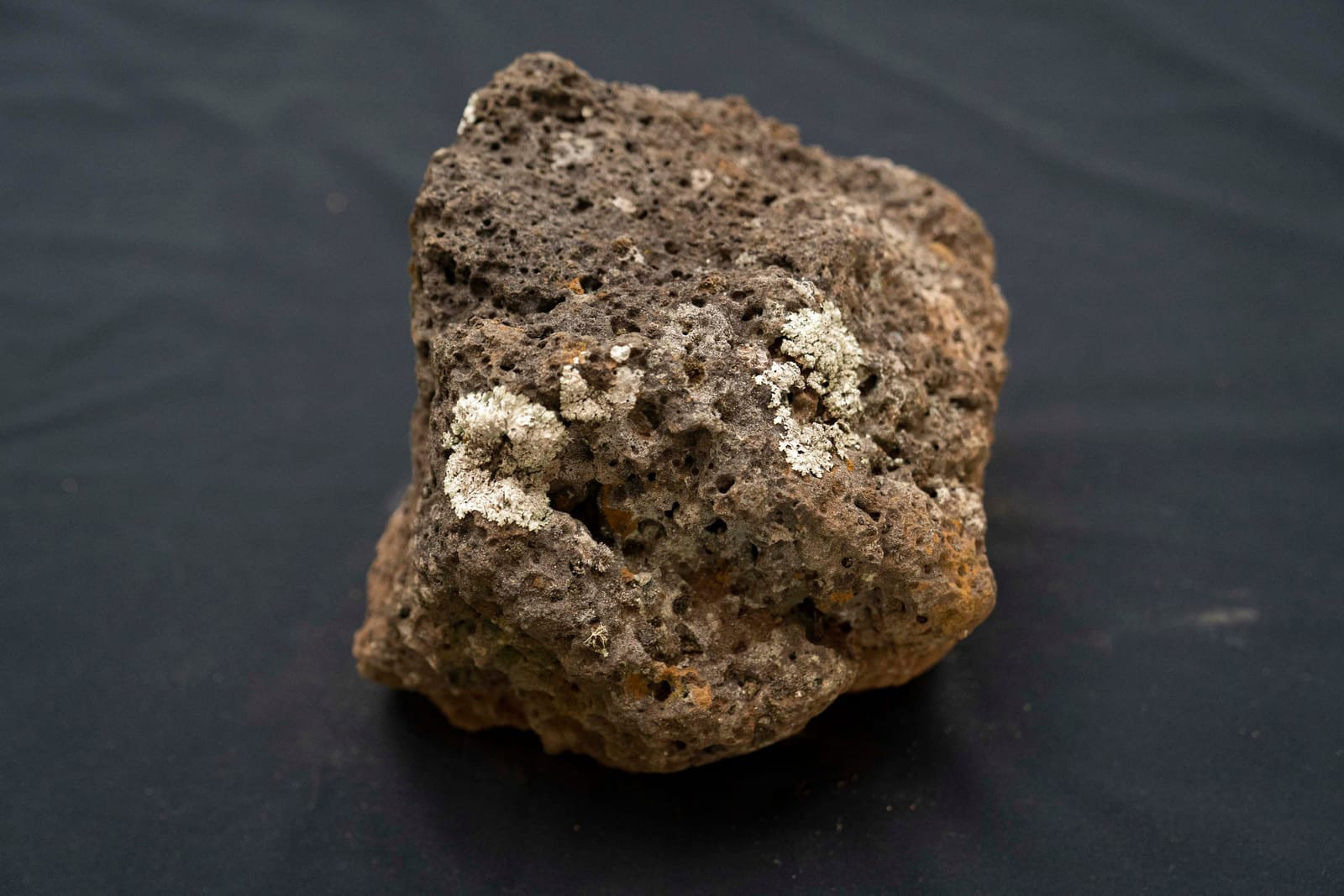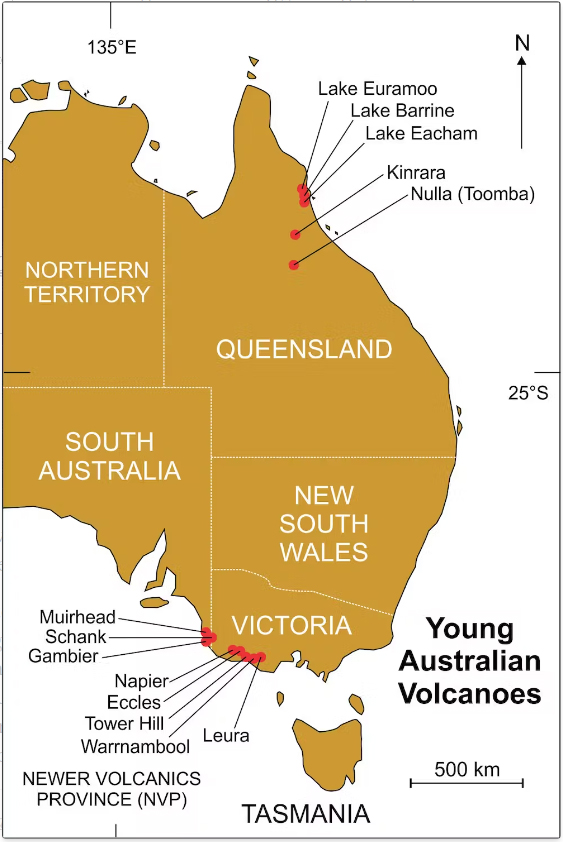Rocks that Shape Australia
Page last updated:22 March 2024
Ngunawal healing stone
Pebble, cobble or boulder?
The healing stone is a large, rounded rock (around 27 cm in diameter) which geologists would describe as a ‘boulder’. Geologists classify sediments into different grain sizes, like sand, pebbles, cobbles and boulders. Looking at the size, roundness and distribution of a sediment grains can give clues to the environment in which they formed in, and how long they were in that environment.
Water is one of the powerful erosional forces that changes rock into different shapes and sizes. In general, fast-moving water, like in mountain rivers, will create and deposit larger sediment types like pebbles and boulders. While water in calmer environments, like deep oceans and lakes, will deposit smaller sediments like silt and mud.
Sediments with very rounded shapes are likely to have been exposed to weathering and erosion for much longer than more angular sediment grains.
References:
- Geoscience Australia Grain size card
Yowah Moon opal
Opal on Mars
NASA’s Curiosity rover has been on Mars since August 2012 and has been beaming back scientific data (through remote sensing) ever since. In 2022 while exploring the Gale Crater, ‘light toned halos’ were noticed in a sedimentary rock and upon further examination were found to be opal! As opal contains water, this could potentially lead to the discovery of minable water for future explorers on Mars.
References:
- Gabriel, T. S. J., Hardgrove, C., Achilles, C. N., Rampe, E. B., Rapin, W. N., Nowicki, S., et al. (2022). On an extensive late hydrologic event in Gale crater as indicated by water-rich fracture halos. Journal of Geophysical Research: Planets, 127, e2020JE006600. https://doi.org/10.1029/2020JE006600
Crystallized water
Opal has the chemical formula SiO2.n(H2O), which means that it is made up of silica and water. Water may form 5 – 20 percent of the stone’s weight. The amount of water present is one of the factors that give opals their varied characteristics and beautiful colours.
References:
- Department of the Prime Minister & Cabinet, Geoscience Australia, Opals Down Under & SA Museum (n.d.) Opal – Australia's National Gemstone infographic, PMC website, accessed 27 November 2023.
Banded iron formation
An Ironclad Economy
With over 30 percent of the planet’s resources of iron ore, Australia leads the world in iron ore production. Iron ore is Australia’s largest and most valuable commodity export, with export earnings in 2021-2022 of $133 billion. Iron ore mining is estimated to directly employ over 43,000 Australians. While iron ore contributes tremendously to the Australian economy, the economy is in turn extremely dependent on iron ore. Fluctuations in the global iron ore prices can have dramatic effects on the Australian economy.
References:
- Australian Bureau of Statistics (2023) Australian Industry, ABS website, accessed 25 July 2023.
- Department of Industry, Science and Resources (2022) Resources and Energy Quarterly: December 2022, DISR website, accessed 25 July 2023.
- Geoscience Australia (2022) Australia’s Identified Mineral Resources 2022: Commodity Summaries - Iron Ore, GA website, accessed 25 July 2023.
- Geoscience Australia (2022) Australia’s Identified Mineral Resources 2022: World Rankings, GA website, accessed 25 July 2023.
- Janda M (23 Aug 2021) ‘Why is the iron ore price crashing and what does it mean for Australia and the dollar?’, Australian Broadcasting Corporation, accessed 25 July 2023.
- Jericho G (25 Mar 2021) ‘Australia's economy is more reliant on iron ore than ever’, The Guardian (Australian Edition), accessed 25 July 2023.
Iron Ore and Foreign Policy
As a basic industrial raw material, iron ore has been an important part of Australian foreign policy. In 1938, with the threat of war growing in Europe and Asia, Australia placed a ban on all iron ore exports. Australia eased export restrictions in 1960 as demand for iron ore grew. The export ban was lifted entirely in 1966, leading to increased iron ore exports to Japan, South Korea and Taiwan, and later China as they opened their economy to the wider world in the 1970’s and 1980’s. Today, iron ore exports serve as an important element of Australian-Chinese foreign and trade relations, with China being by far the leading export destination for Australian iron ore.
References:
- Granwal, L. (2023) Leading markets for iron ore exports from Australia in financial year 2022, Statista, accessed 26 July 2023.
- National Museum of Australia (2023) Defining Moments: Iron ore exports, NMA website, accessed 14 June 2023.
- Shepherd J (1938) ‘Repercussions of the Australian Embargo on Iron Ore Exports’, Far Eastern Survey, 7(25):294-298.
- Tsokhas K (1995) ‘Trouble Must Follow: Australia's Ban on Iron Ore Exports to Japan in 1938’, Modern Asian Studies, 29(4):871-892.
Broken Hill ore
Women and Broken Hill Miners’ Strikes
Women played an important part in the mining strikes in Broken Hill, providing physical and moral support to the miners. In the 1889 strike, women participated in street demonstrations and joined the picket lines. They formed the “Women's Brigade” and took direct action by attacking strike-breakers with sticks, brooms and mops. The Women’s Brigade also participated in the 1892 strike, engaging in marches and blocking strike-breakers attempting to cross the picket lines. The five-month lockout of 1909 and the 18-month strike of 1919-1920 prompted Broken Hill women to form relief committees to support the striking miners and their families by providing food and clothes.
References:
- The Australian Women's Register (2009) Broken Hill Strikes (1889-1920), Australian Women's Archives Program, accessed 15 June 2023.
- Volkofsky A (4 May 2019) ‘How the 'rebel women' of Broken Hill shaped the mining town and Australia's early union movement’, Australian Broadcasting Corporation, accessed 25 July 2023.
Boom and Bust in Broken Hill
The history of the local economy of Broken Hill closely follows the cycles of boom and bust in the mining industry. From modest beginnings as a remote outback mine site in 1885, by 1905 Broken Hill had boomed. Mining wealth and the arrival of workers for the mines created a demand for infrastructure, including public buildings, public transport lines, electric power stations and water pipelines. The "boom" years saw Broken Hill's population grow to over 30,000, making it the second largest city in New South Wales. “Bust” years and automation of mine work have seen a decrease in the town’s population. While silver, lead and zinc mining is still going on in Broken Hill, new operations are being developed to produce ethical and reliable cobalt for use in batteries for electric vehicles and renewable energy storage.
References:
- Broken Hill City Council (2023), About the City: History, Broken Hill City Council website, accessed 15 June 2023.
- Department of Climate Change, Energy, the Environment and Water (2016), City of Broken Hill, Silver City Hwy, Broken Hill, NSW, Australia, Australian Heritage Database, accessed 25 July 2023.
- Dyer G (11 March 2022) ‘Broken Hill Roars Back to Life’ Sharecafe, accessed 25 July 2023.
Victorian gold ore
Gold and Democracy
The Eureka Rebellion is often considered a defining moment in the development of Australian democracy. In 1854, gold miners protesting high mining taxes, police brutality and corruption, the lack of the vote, and the lack of political representation rebelled against the colonial authorities. By building a stockade at Eureka Flat in Ballarat, Victoria, the rebellious miners declared their open opposition to the colonial Victorian government. Although the rebellion was quickly suppressed by the British Army and Victorian Police, public opposition to the government’s heavy-handed tactics led to the adoption of several political reforms demanded by the miners, such as the secret ballot and voting rights for adult males.
References:
- Department of Climate Change, Energy, the Environment and Water (2022) Eureka Stockade Gardens, DCCEEW website, accessed 25 July 2023.
Permian coal
Coal Power
For decades coal has been Australia’s primary source of fuel for generating electricity. Australia’s large coal resources have made our electrical power generation relatively cheap, but burning coal is a major contributor to climate change. Coal use in Australia’s National Electricity Market (NEM) peaked in 2008, with 86% of electricity being generated by coal. Since then, the proportion of coal in the NEM electricity mix has fallen, but coal still accounted for about 58% of Australia’s electricity generation.
To see Australia’s energy mix today, visit the National Energy Market dashboard.
References:
- Blakers A and Nadolny A (2022) ‘Global coal use in 2022 is reaching an all-time high, but Australia is bucking the trend’ The Conversation, accessed 25 July 2023.
- Clean Energy Council (2023) Clean Energy Australia report, Clean Energy Council website, accessed 25 July 2023.
- Energy.gov.au (2023) Electricity generation, Department of Climate Change, Energy, the Environment and Water website, accessed 25 July 2023.
- McConnell D, Holmes à Court S, Tan S and Cubrilovic N (2023) An Open Platform for National Electricity Market Data, OpenNEM project, accessed 25 July 2023.
Jurassic sandstone
Heritage in Stone
The Sydney region is home one of Australia’s greatest concentrations of rock engravings. The sandstone of the Sydney region has been used as a canvas by First Nations Australians for thousands of years. The soft sandstone is relatively easy to carve, but it also weathers easily, requiring generations of First Nations artists to maintain and refresh the engravings. The rock engravings depict a wide variety of subjects, including marine and land animals, humans, cultural items and mythological beings. Rock art sites are significant to First Nations people, providing important links to their past and their living culture.
References:
- McDonald J (2008) ‘Chapter 5: The Rock Art of the Sydney Basin’, Dreamtime Superhighway Sydney Basin Rock Art and Prehistoric Information Exchange, Terra Australis, 27:43-68, ANU Epress, Canberra.
- Attenbrow V and Kononenko N (2017), ‘Creating Sydney-Hawkesbury Rock Engravings: A Mangrove Mountain Engraving Tool.’ Archaeology in Oceania, 52(3):161–70.
- ‘Hidden in plain sight Indigenous rock art of Australia's doorstep’ The Guardian. https://www.theguardian.com/travel/2015/jul/23/hidden-in-plain-sight-indigenous-australian-rock-art-on-sydneys-doorstep , accessed 03/08/2023.
Building Sydney
The city of Sydney was literally built on sandstone. A 200 metre thick layer of sandstone forms the bedrock for much of the region. Readily accessible and easy to cut and carve, sandstone became the construction material of choice during the 18th and 19th centuries. During the 19th century, historians estimate that there were more masons working in Sydney quarrying, dressing and building with sandstone than in the whole of Europe. Many of Sydney’s notable buildings are built of local sandstone, including the Queen Victoria Building, Sydney Town Hall, the Australian Museum, St. Mary's Cathedral, the Art Gallery of New South Wales, the University of Sydney Great Hall and the Central Railway Station.
References:
- Irving R (2006) Paradise, Purgatory, Hell Hole: The Story of the Saunders Sandstone Quarries, Pyrmont, Media Masters, Singapore.
- Smith M (2020) Hawkesbury Sandstone, National Rock Garden Rock website, accessed 25 July 2023.
Cretaceous marine sedimentary rock
Building an Ichthyosaur
A lot of work goes into creating a model like ours!
A 3D rendering (picture) of the ichthyosaur was sculpted by paleo-artist Vlad Konstantinov in early 2018, in consultation with Dr Mikael Siversson as part of the redevelopment of the WA Museum Boola Bardip. Dr Siversson is an expert on Cretaceous ichthyosaurs found in Australia and is passionate about ensuring models of ancient animals are as true-to-life as possible based on fossil evidence. Geoscience Australia is very grateful that the WA Museum shared their 3D rendering with us.
The rendering was then used by CDM Studios in Perth to make this model using an SLA (Stereolithography) 3D printer. You may have seen 3D printers before, but this one is much larger than most... it can print objects that are up to 800 x 800 x 500mm. That's larger than most boxes you’d use to move house! Although that’s impressive, our ichthyosaur is obviously larger than a moving box, so it was 3D printed in sections, which were fitted around an internal metal frame. It was then sanded, glued and epoxied to strengthen the model.
The model was hand-painted, with the colouration based on fossil evidence as reported in Nature.
Cenozoic limestone
The Power of Erosion
The Twelve Apostles, located on the traditional lands of the Eastern Maar people on Victoria’s south coast, are a major tourist attraction of the Great Ocean Road. These spires of rock and the surrounding cliffs are made of Cenozoic limestone. The Twelve Apostles were formed by the eroding power of waves and wind wearing away the Australian coastline. At first, caves were formed in the shoreline cliffs as the softer limestone eroded away. These caves eventually became arches, which have collapsed and left the impressive towering rock stacks standing in the ocean. This process of erosion continues today.
References:
- Parks Victoria (n.d.) Fly Over the Twelve Apostles, Parks Victoria, accessed 25 July 2023.
Budj Bim basalt
Volcanoes in Australia
Australia isn’t generally thought of as a “land of volcanoes”, but in fact there are many dormant and extinct volcanoes that run up the east coast of Australia. The Newer Volcanics Province extends through western Victoria to Mount Gambier in South Australia and is composed of more than 400 small volcanoes. The most recent eruption in the Newer Volcanics Province was only 4,000 to 5,000 years ago. Volcanoes also occur in Northern Queensland. Located north and inland of Townsville, there are at least nine volcanoes and 14 lava fields that are thought to have erupted in the last 10,000 years. There are even active volcanoes in Australia, on the Heard and McDonald Islands, which are part of the Australian Antarctic Territory, about 4,000km southwest of mainland Australia. One of the volcanoes on Heard Island is nicknamed Big Ben, and it erupts frequently!
References:
- Brandel P (11 Feb 2023) ‘Australia's last eruption was 5,000 years ago so could extinct volcanoes come back to life?’, Australian Broadcasting Corporation, accessed 25 July 2023.
- Handley H, van Otterloo J and Cas R (28 August 2018) ‘Would an eruption in Melbourne really match Hawaii’s volcanoes? Here’s the evidence’, The Conversation, accessed 25 July 2023.
Reference materials
- Main exhibition text references [PDF 125.5 KB]
